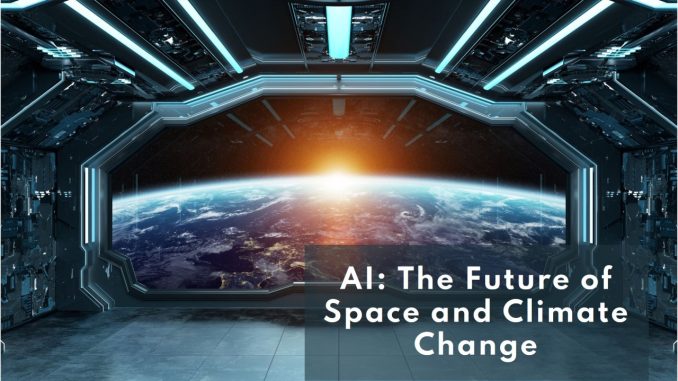
Artificial Intelligence (AI) has rapidly evolved from a niche technological curiosity to a transformative force reshaping numerous fields, with climate science and space exploration among the most significant. These two domains share a common thread: they both involve enormous amounts of complex data, uncertainty, and challenges that demand advanced analytical capabilities. AI’s ability to process vast datasets, recognize patterns, and optimize solutions has positioned it as a critical tool in addressing some of the most urgent and exciting questions humanity faces today—from understanding Earth’s changing climate to venturing further into the cosmos. Exploring how AI contributes to these areas offers a window into the future of science and technology, illustrating how machines and human ingenuity combine to unlock new frontiers.
In the realm of climate science, the challenges are both vast and urgent. Climate models require processing enormous volumes of data collected from satellites, weather stations, ocean buoys, and countless other sources. These models simulate complex interactions within Earth’s atmosphere, oceans, land surfaces, and ice sheets to predict future climate patterns. However, traditional computational approaches often struggle with the sheer scale and complexity of this information. This is where AI steps in, offering powerful algorithms that can digest massive datasets more efficiently and detect subtle patterns that might otherwise go unnoticed.
Machine learning models, a subset of AI, are being employed to refine climate predictions by analyzing historical climate data alongside current measurements. These models can identify trends and anomalies that improve the accuracy of weather forecasts and long-term climate projections. For example, AI algorithms can enhance predictions of extreme weather events like hurricanes or droughts, allowing governments and communities to better prepare and mitigate potential damage. Additionally, AI aids in monitoring environmental changes such as deforestation or glacial retreat by interpreting satellite imagery, automating what used to be labor-intensive tasks for scientists.
Beyond prediction, AI also plays a pivotal role in optimizing energy systems to combat climate change. By intelligently managing renewable energy sources like solar and wind, AI helps stabilize grids and reduce reliance on fossil fuels. Smart energy systems, powered by AI, can dynamically adjust consumption based on weather forecasts and demand, contributing to greater efficiency and sustainability. These advances not only assist in reducing carbon footprints but also pave the way for a cleaner energy future.
Turning to space exploration, the challenges are equally daunting but layered with the allure of discovery. Missions to other planets, moons, and beyond generate massive amounts of data—from rover images and sensor readings to telemetry and scientific measurements. Processing and interpreting this data quickly and accurately is essential for mission success, especially when communication delays make real-time human intervention impossible. AI has emerged as a vital partner in this endeavor, enabling autonomous systems that can operate with minimal human oversight.
Robotic explorers on Mars, for example, rely on AI to navigate rugged terrain, select scientific targets, and adapt to unexpected obstacles. The Mars rovers’ ability to make decisions independently increases the efficiency and safety of exploration, turning raw data into actionable insights. Moreover, AI algorithms analyze the vast troves of imagery and sensor data transmitted back to Earth, helping scientists identify geological features, signs of water, or other clues about the planet’s history.
AI also plays a crucial role in planning future missions and optimizing spacecraft operations. By simulating various mission scenarios, AI tools can help engineers design more effective trajectories and resource allocations. In satellite technology, AI assists with anomaly detection and predictive maintenance, ensuring that costly equipment functions smoothly over extended periods. The increasing complexity of space missions, such as plans for lunar bases or manned Mars expeditions, makes AI indispensable for managing logistics and risk.
Beyond current missions, AI is fundamental in the search for extraterrestrial life. Projects like SETI (Search for Extraterrestrial Intelligence) use machine learning to sift through enormous amounts of radio signal data, identifying patterns that might indicate intelligent origin. The ability of AI to recognize subtle, non-random signals vastly improves the chances of detecting meaningful signs amidst cosmic noise.
What connects AI’s roles in climate science and space exploration is its capacity to extend human cognition—augmenting our ability to analyze, predict, and act upon complex phenomena. Both fields are defined by vast, dynamic systems where incomplete data and uncertainty are the norm. AI provides tools to manage these complexities, enabling scientists to focus on interpretation, strategy, and innovation rather than getting bogged down by data overload.
However, as AI becomes increasingly integral to these domains, questions of trust, transparency, and ethical use arise. Models must be rigorously validated, and their limitations clearly understood, especially when decisions impact environmental policies or human safety. Collaborative efforts between AI specialists and domain experts are critical to ensure that technology complements scientific rigor rather than replacing it.
In conclusion, AI’s impact on climate science and space exploration exemplifies how cutting-edge technology is helping humanity tackle its most profound challenges and aspirations. By enhancing data analysis, improving predictive capabilities, and enabling autonomous systems, AI accelerates progress toward understanding and protecting our planet while expanding the reach of our curiosity beyond Earth. As these technologies evolve, the partnership between human insight and artificial intelligence promises to unlock discoveries that were once unimaginable, marking a new era of exploration and stewardship for our world and the universe beyond.